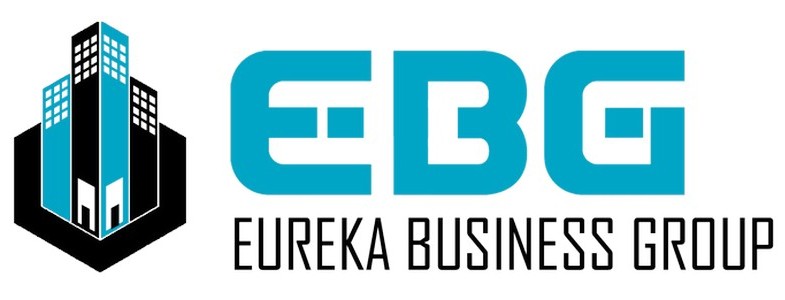- Home
- Industrial
- Industrial Investors Resources
- Investing in Industrial Flex vs. Traditional Industrial: What’s the Difference?
Investing in Industrial Flex vs. Traditional Industrial: What’s the Difference?
The industrial real estate sector has evolved significantly in recent years, driven by changes in technology, supply chain logistics, and e-commerce. Investors looking to enter this market are often faced with a critical decision: Should they invest in industrial flex properties or traditional industrial properties? While both types offer opportunities for strong returns, they cater to different tenant needs and market demands. Understanding the distinctions between these property types is key to making a well-informed investment decision.
This article will explore the core differences between industrial flex and traditional industrial properties, discussing their uses, market demand, investment considerations, and the potential advantages of each.
What Is an Industrial Flex Property?
Industrial flex properties are versatile spaces that combine industrial, office, and sometimes retail components in a single building. “Flex” refers to the flexibility of these spaces to serve multiple purposes. Typically, the office portion takes up a significant portion of the square footage, while the industrial or warehouse section can accommodate light manufacturing, storage, or distribution activities.
Key Characteristics of Industrial Flex Properties:
- Mixed-Use Capabilities: Industrial flex buildings are designed to be adaptable. Tenants can modify the space to suit their specific business needs, whether they require more office space, storage, or light manufacturing areas.
- Smaller Tenant Spaces: Flex properties typically serve smaller businesses compared to traditional industrial buildings. They are well-suited for companies in sectors like technology, research and development (R&D), healthcare, or media, which need both office and industrial functions under one roof.
- Prime Locations: These properties are often located near urban centers or along major transportation routes to cater to businesses that value accessibility and proximity to clients.
What Is a Traditional Industrial Property?
Traditional industrial properties are purpose-built structures designed for manufacturing, warehousing, distribution, and logistics. These buildings usually have high ceilings, large floor plates, and minimal office space to accommodate heavy machinery, assembly lines, and storage.
Key Characteristics of Traditional Industrial Properties:
- Specialized Use: Traditional industrial properties are designed for specific functions, such as heavy manufacturing or large-scale warehousing. This specialization makes the space less flexible than flex properties but ideal for businesses with substantial operational needs.
- Larger Tenant Spaces: Traditional industrial buildings often house larger tenants, such as manufacturing companies, logistics providers, or e-commerce distribution centers. These tenants typically require vast spaces and high clear heights for storage or production.
- Suburban or Rural Locations: Traditional industrial properties are typically located outside urban centers where land is more affordable, and there’s ample space for large-scale operations.
The Differences Between Flex and Traditional Industrial Properties
While both industrial flex and traditional industrial properties fall under the industrial real estate umbrella, they differ significantly in terms of their usage, tenant profile, design, and location. Below are the main distinctions:
1. Usage Flexibility
- Industrial Flex: The key appeal of industrial flex properties lies in their adaptability. Businesses can configure these spaces to accommodate a mix of office and light industrial functions. This flexibility is particularly attractive to smaller businesses and startups that may need to scale their operations without relocating to a new facility.
- Traditional Industrial: Traditional industrial properties are less flexible. They are typically designed for a single use, such as manufacturing or large-scale warehousing, limiting their appeal to a narrower tenant base. However, they provide the ideal environment for companies requiring large amounts of space and specialized industrial infrastructure.
2. Tenant Profile
- Industrial Flex: Tenants of industrial flex properties tend to be smaller businesses from industries like technology, R&D, healthcare, or media. These businesses often need a combination of office and industrial space. Because these companies are often in growth stages, they may have shorter lease terms and more frequent turnover.
- Traditional Industrial: Traditional industrial properties are more likely to attract larger, long-term tenants in sectors like manufacturing, logistics, or e-commerce. These businesses typically require extensive square footage and are willing to sign longer leases due to their specific space needs and operational requirements.
3. Location
- Industrial Flex: These properties are usually located closer to city centers or in suburban areas with easy access to major highways and transportation hubs. The strategic location allows businesses to be near their customers or urban workforces while maintaining some industrial capabilities.
- Traditional Industrial: Traditional industrial properties are more likely to be found in suburban or rural areas where land is cheaper, and space is abundant. The locations are typically chosen for their proximity to transportation networks like highways, railroads, or airports, which facilitates logistics and distribution operations.
4. Design and Construction
- Industrial Flex: Flex spaces are designed with versatility in mind. They usually have a lower clear height (12-20 feet) and a more significant portion of office space compared to traditional industrial buildings. These buildings may also include amenities such as parking lots, attractive building facades, and retail components to appeal to a wider range of businesses.
- Traditional Industrial: Traditional industrial buildings are built for efficiency. They often feature large open spaces, high clear heights (18-40 feet), and reinforced floors to accommodate heavy equipment and inventory. The emphasis here is on utility rather than aesthetics.
5. Investment Considerations
- Industrial Flex: Investors in flex properties can benefit from a diversified tenant base due to the mixed-use nature of these spaces. However, the leases tend to be shorter, leading to more frequent turnover. Additionally, the smaller size of these properties may result in a lower rental yield compared to traditional industrial spaces. Flex properties also tend to be more expensive per square foot due to their proximity to urban centers.
- Traditional Industrial: Traditional industrial properties often offer longer-term leases, lower tenant turnover, and larger tenants, which provide stable, predictable income. The large-scale nature of these buildings allows for high rental yields, though they may be more vulnerable to economic cycles. They also require a substantial initial capital investment and are less likely to appreciate in value compared to flex properties located in rapidly growing urban areas.
Market Demand for Flex vs. Traditional Industrial Properties
Demand for industrial real estate is booming due to the rise of e-commerce, logistics, and global supply chain needs. Both industrial flex and traditional industrial properties have seen increased demand, but for different reasons.
Industrial Flex Demand: Flex properties are seeing heightened demand in growing cities where startups, tech companies, and research firms need flexible spaces for a hybrid of office and light industrial work. As remote and hybrid work models become more prevalent, businesses may seek flexible spaces closer to urban centers to accommodate smaller, multifunctional teams.
Traditional Industrial Demand: On the other hand, traditional industrial properties are benefiting from the rapid growth of e-commerce and large-scale distribution needs. As companies like Amazon continue to expand their logistical networks, the demand for large warehouse spaces near major highways and transportation hubs remains strong.
Conclusion
Investing in industrial flex versus traditional industrial properties requires careful consideration of tenant demand, location, building design, and your long-term investment strategy. Flex properties offer versatility and urban proximity, making them attractive to smaller businesses and tech industries. Traditional industrial properties, while less flexible, provide stable, long-term leases and cater to larger tenants in sectors like manufacturing and logistics.
Both asset types have their pros and cons, but understanding your investment goals and the dynamics of your target market will help you decide which type of industrial property offers the best opportunity for growth and profitability.



